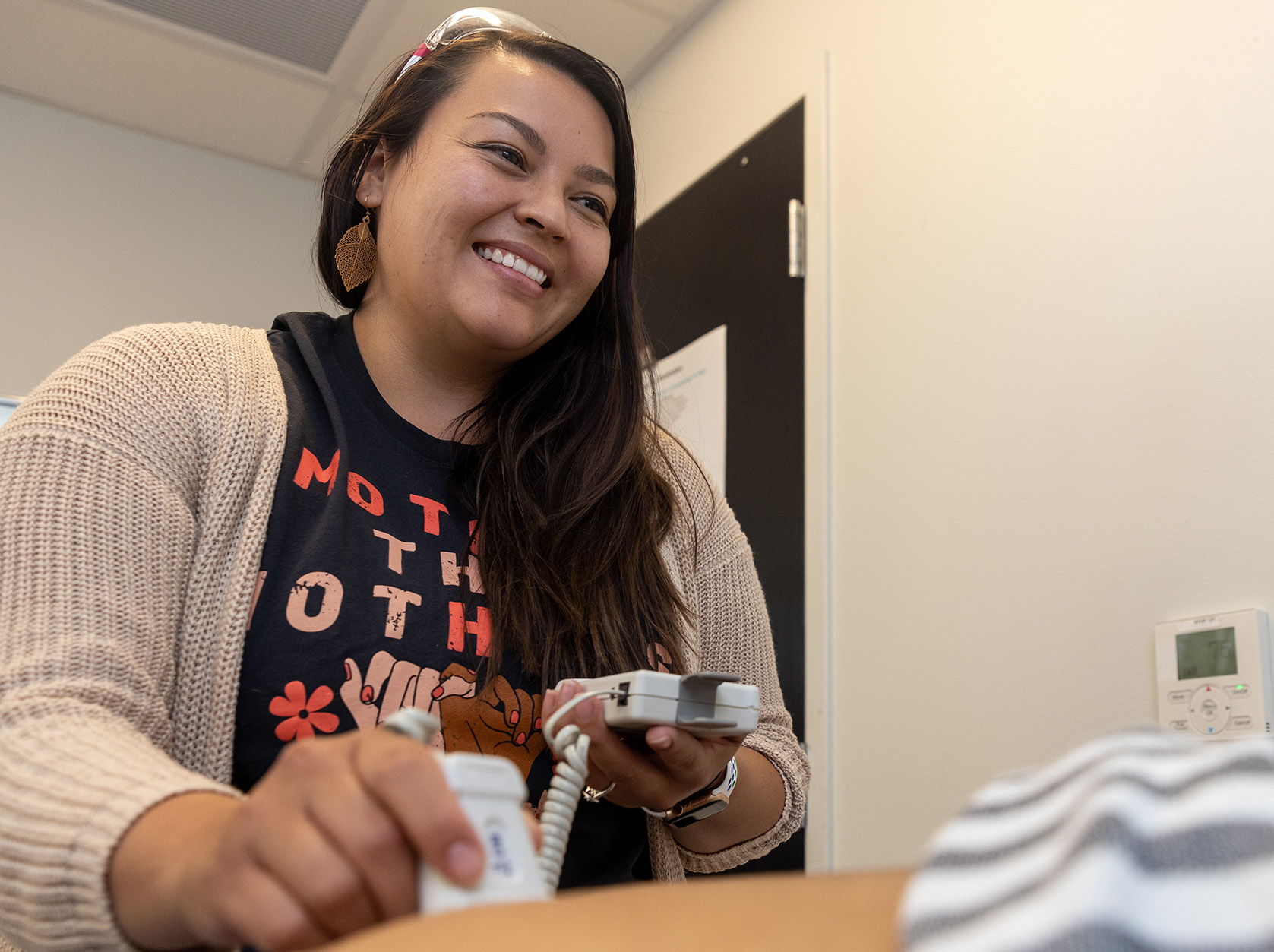Midwifery is growing in popularity across the country, but it is still an often-misunderstood practice.
While midwifery may conjure up images for some of a kindly older neighbor attending a birth, with their focus on research and partnerships with pregnant people, midwives are considered among the most modern, forward-thinking health providers.
“Many times, because our OB-GYNs have full schedules, a lot of people get into a midwife clinic for their first pregnancy visit, and they have no idea what a midwife is,” said Noelle Borders, CNM, DNP, and chief of the Midwifery Division in The University of New Mexico Department of Obstetrics & Gynecology. “In New Mexico, certified nurse midwives are independent practitioners and work under their own license and provide normal reproductive, pregnancy and postpartum care.”
Borders, who works at the UNM Eubank and UNM Women's Health clinics, said that midwives view healthy pregnancy and labor as normal life processes that require watchful vigilance, rather than active management.
“We’re there to inform, support and to listen to what women need in birth and to carve out that safe space, particularly in a hospital,” she said.
To help recognize their efforts, the certified nurse midwifery group at the UNM School of Medicine will be promoted from staff to faculty status within the Department of Obstetrics & Gynecology as of July 1.

“Moving from staff to faculty honors the evidence-based care and educational role that the midwives already play at UNM. This legitimizes us as peers in the Department of OB-GYN with our physician colleagues, who are faculty.” Noelle Borders, Midwifery Division Chief
Borders added that the move will better recognize and compensate the group for their educational and academic contributions.
“Becoming faculty institutionally acknowledges the work we’re already doing,” she said. “If the shoe fits, wear it.”
The Midwifery Division has been practicing at UNM for more than four decades and works alongside OB-GYN physicians. If a pregnant person has a high-risk pregnancy and would like to work with a midwife, an obstetrician will provide additional support.
Additionally, the group also teaches and supervises School of Medicine and College of Nursing students, midwifery students, family medicine residents and OB-GYN residents.
“We could not do the work that we do without the support and true partnership of our OB-GYN colleagues. We are a team,” Borders said. “It truly is an honor to work together to support
women and improve the health and well-being of New Mexico families. We couldn’t do it without each other.”
Borders said midwifery practices in New Mexico come from a long lineage of Hispanic and indigenous midwives, including curandera-parteras – traditional Hispanic midwives.
“New Mexico is unique in its history of midwifery and honoring community health workers,” Borders said.
But Hispanic and indigenous midwives’ numbers are lower in the state than would be preferable, Borders said, adding that midwifery education programs, particularly that at the UNM College of Nursing, are prioritizing recruiting and training midwives from diverse backgrounds to better serve people of color.
Today, New Mexico has the highest percentage of certified nurse midwife-attended births in the U.S. One in three births in New Mexico are attended by midwives, much higher than the national average of 8%.
That number has been attributed to several factors, including the state’s long-standing midwifery tradition and limited competition from physicians due to sparse rural populations, as well as the UNM nurse-midwifery program.
“For the most part, if you’re a healthy, normal pregnant person, the most appropriate care is with a midwife, in collaboration with OB-GYN colleagues as needed,” Borders said. “Midwives are really family- and person-focused. We are highly invested in individualizing care for what people want and need.”

